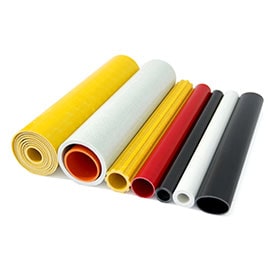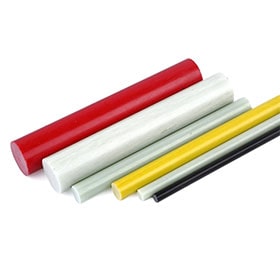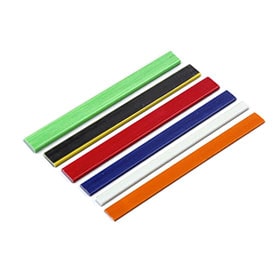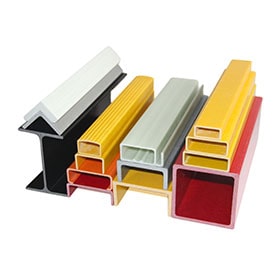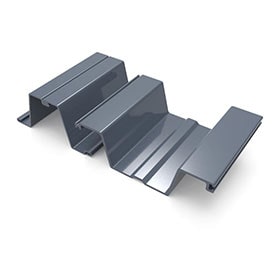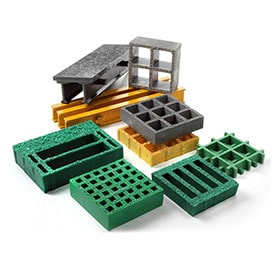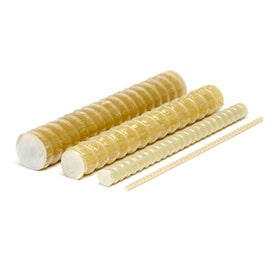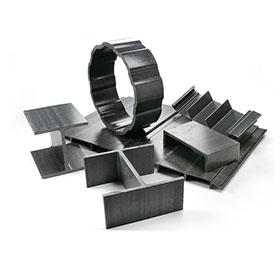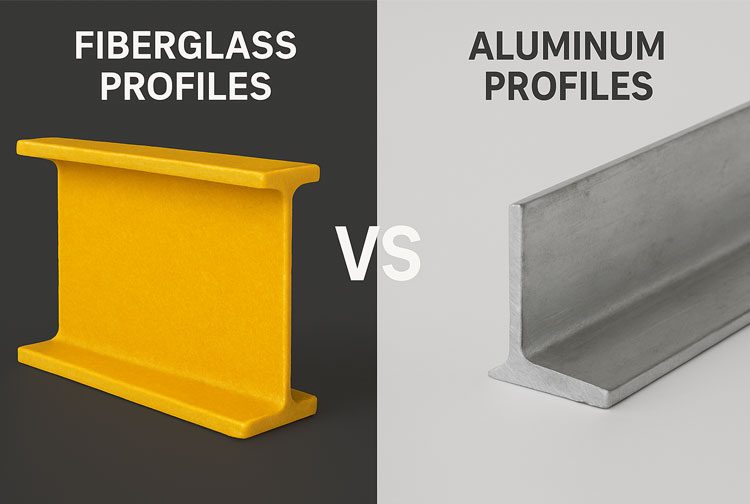
Fiberglass Profiles vs Aluminum Profiles
In many industries, aluminum profiles have been the go-to choice for lightweight and corrosion-resistant structural applications. From architectural framing to transportation, aluminum’s versatility is undeniable. However, in recent years, fiberglass profiles—also known as FRP (Fiberglass Reinforced Plastic) or GRP profiles—have emerged as a powerful alternative. In specific situations, FRP not only matches but outperforms aluminum, making it the better choice for long-term performance and cost efficiency.
Understanding when fiberglass profiles can effectively replace aluminum profiles helps engineers, designers, and project managers make better material decisions.
1. When Corrosion Resistance Is Critical
While aluminum offers good resistance to rust, it is vulnerable to pitting corrosion in salty or acidic environments. In coastal regions, marine structures, and chemical processing plants, aluminum can degrade faster than expected, leading to costly repairs or replacements.
Fiberglass profiles are immune to rust and resist most acids, alkalis, and salts. Their polymer resin matrix provides a barrier that prevents chemical attack, making FRP the ideal choice for:
- Offshore platforms and coastal walkways
- Chemical plant structures and supports
- Wastewater treatment facilities
- Salt storage and desalination plants
2. When Electrical Insulation Is Required
Aluminum is a good conductor of electricity, which is a disadvantage in certain environments. Applications involving high-voltage equipment, power distribution systems, or hazardous areas demand non-conductive materials to enhance safety and reduce grounding requirements.
Fiberglass profiles are naturally non-conductive, eliminating the risk of electric shock and stray currents. This makes them ideal for:
- Cable trays and ladder racks
- Electrical substation structures
- Supports in explosive or flammable environments
- Solar PV mounting systems requiring electrical isolation
3. When Long-Term Maintenance Must Be Minimized
In remote or high-risk locations, maintenance can be costly and time-consuming. Aluminum, while low-maintenance compared to steel, still requires protective coatings or anodizing in aggressive environments. Over decades, this adds to operational costs.
Fiberglass profiles require virtually no maintenance. They don’t need painting, won’t oxidize, and remain structurally sound for 20–30 years or more, even in extreme climates.
4. When Weight Savings Are Important—But Without Conductivity
Both aluminum and fiberglass are lightweight compared to steel. Aluminum has a higher stiffness-to-weight ratio, but fiberglass offers the same weight advantage without electrical conductivity and with higher impact resistance in some designs.
This is beneficial for applications such as:
- Handrails and guardrails in public spaces
- Portable platforms and scaffolding
- Modular walkways in industrial plants
5. When Thermal Conductivity Is a Concern
Aluminum has high thermal conductivity, which can be problematic in applications where heat transfer needs to be minimized—such as cold storage facilities or areas with temperature-sensitive equipment.
Fiberglass profiles are thermally insulating, helping to maintain temperature stability and improve energy efficiency.
6. When Aesthetic and Color Customization Is Required
Aluminum requires painting or powder coating for color customization, which can chip or fade over time. Fiberglass profiles can be pigmented during manufacturing, offering consistent color throughout the material. Even after surface wear, the color remains intact, reducing the need for repainting.
7. Cost Comparison Over the Life Cycle
At first glance, aluminum profiles may seem more affordable than FRP. However, total cost of ownership often tells a different story. Considering installation, maintenance, and replacement costs over decades, fiberglass frequently proves more economical.
Example:
- Aluminum handrails in a coastal environment may require repainting every 3–5 years and full replacement within 15–20 years.
- Fiberglass handrails in the same setting can last 25+ years with minimal maintenance, reducing labor and material costs.
8. Industry Examples of FRP Replacing Aluminum
- Marine Industry: FRP gratings, ladders, and walkways replacing aluminum structures on docks and ships for superior corrosion resistance.
- Energy Sector: Fiberglass cable trays replacing aluminum to prevent electrical conductivity issues in substations.
- Water Treatment: FRP platforms replacing aluminum in high-chlorine environments to avoid pitting corrosion.
- Architecture: FRP decorative panels replacing aluminum cladding in coastal resorts for longer-lasting aesthetics.
9. Side-by-Side Comparison
| Property | Aluminum Profiles | Fiberglass Profiles (FRP) |
|---|---|---|
| Corrosion Resistance | Good, but limited in salty/acidic environments | Excellent, resistant to most chemicals |
| Electrical Conductivity | High | None |
| Thermal Conductivity | High | Low |
| Weight | Light | Light |
| UV Resistance | Good with coating | Excellent with UV-stabilized resin |
| Maintenance Requirement | Moderate | Very low |
| Service Life in Harsh Environments | 15–20 years | 20–30+ years |
Conclusion
Fiberglass profiles are not a universal replacement for aluminum, but in corrosive, electrically sensitive, low-maintenance, and thermally insulated applications, FRP can clearly outperform aluminum. With its combination of durability, safety, and design flexibility, fiberglass is becoming the preferred choice for many engineers and project developers worldwide.
If your project demands long-term performance in challenging environments, it may be time to consider fiberglass profiles as a superior alternative to aluminum.
For expert guidance and high-quality FRP solutions, contact us at Jessica@frpzs.com or via WhatsApp +86 15303735673.
 +86 15303735673
+86 15303735673 Jessica@frpzs.com
Jessica@frpzs.com
 Technical Data
Technical Data


